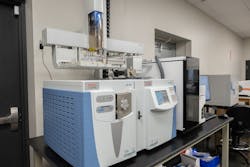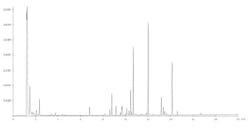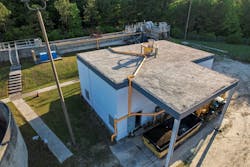Standardized plant-based formulations safely neutralize foul wastewater treatment odors
For well over a century in industrialized society, wastewater treatment facilities have provided a sanitary method for disposing of waste, safeguarding public health, and preserving the environment. Despite the need for this fundamental procedure, it can be easy to slander these operations when struck by the pungent scent that frequently escapes a facility’s fence line.
Managing the unpleasant odors inherent to critical wastewater treatment operations is a persistent challenge. The complex biological processes and breakdown of organic waste in modern facilities inevitably produce a wide range of volatile organic compounds (VOCs), many of which carry offensive smells. These scents frequently permeate the surrounding environment and impact the well-being of plant workers and nearby residents, which can result in strained community relationships.
Historically, odor control methods within wastewater treatment operations have relied on ineffective masking agents or expensive chemical scrubbing. While these approaches can provide some relief, each has several drawbacks. Masking agents merely cover odors temporarily by combining with the malodors, creating new, equally-smelly odors. And chemical scrubbing is costly, requires specialized equipment, and often utilizes hazardous compounds.
Fortunately, a new wave of plant-based odor neutralization is transforming the wastewater industry, providing a safe, effective, and environmentally responsible approach for tackling odors at their source. This article explores the science of odors, and then explains why molecular neutralization is more effective, eco-friendly, and cost-effective than traditional solutions.
Deconstructing odors at the molecular level
Industrial odor control leverages a well-established scientific approach centered on molecular polarity and binding interactions. This targeted strategy exploits the polar structure of many odorous molecules found in industrial environments, such as hydrogen sulfide and mercaptans.
Polar molecules have an uneven distribution of electrical charges across their atoms, resulting in positive and negative poles. Plant-based natural neutralizers are meticulously formulated to maximize interactions with malodorous molecules based on their polarity.
This strategic approach, known as adsorption, works by binding neutralizing formulations to the surface of odor-causing particles. Subsequently, neutralizers fully envelop the offending molecules through absorption, effectively deactivating their odor. This immobilizes malodorous compounds, preventing them from interacting with olfactory receptors in the human nose and rendering them unable to elicit an unpleasant odor response.
These types of reactions neutralize the majority of volatile organic compounds (VOCs)—the components that cause scents—in the air, leaving behind molecules that are indetectable to the senses. The effectiveness of an odor neutralizer depends on its ability to establish strong binding interactions with specific odor molecules present in the environment. Therefore, strategic selection of neutralizers tailored to various industrial applications is crucial for optimal results.
By harnessing principles of polarity and binding, industrial odor neutralizers significantly reduce unpleasant odors in industrial settings.
Proven natural odor solutions solve diverse abatement problems
Leading natural odor control suppliers leverage their extensive knowledge, years of research, and innovative laboratory technologies to develop specialized odor-fighting formulations. Each blend is designed for maximum effectiveness in a few targeted settings, typically crafted for a specific industrial sector, such as wastewater treatment.
While certain situations require custom formulations, most applications benefit from standard blends designed to target most airborne contaminants generated by their typical processes. These standard blends effectively neutralize odorous emissions that can cause problems for employees and nearby communities. Advantages of these solutions include:
- Industry expertise: End users benefit from the supplier's deep understanding of industrial processes gained through experience and testing across numerous facilities in various geographic areas.
- Faster implementation: Readily available off-the-shelf solutions reduce lead time.
- Streamlined startup: Turnkey systems minimize setup and commissioning time.
- Proven performance: Successful application across various industries provides confidence in the products’ effectiveness.
- Adaptable to process changes: Flexible formulations provide end users with the freedom to switch raw materials and optimize their operations without fear of requiring new custom odor control blends.
- Reliable support: Suppliers can provide optimal support because they are deeply familiar with the products, as they are used by many of their customers.
While standard formulations address the needs of most plants, some facilities may require custom odor control blends. In these cases, experienced suppliers can prescribe or create specialized solutions.
Long-lasting sample collection for odor analysis
Developing highly effective odor control solutions begins with thorough analysis of a facility’s air. This requires collecting samples at various locations to determine an odor profile throughout a typical plant (Figure 1).
In the past, Tedlar bags were commonly employed to collect samples. However, Markes thermal desorption tubes provide advantages for sampling air with low concentrations of malodorous components. To collect saturated samples, facility air is pumped through the thermal desorption tube using a pump over a five-minute period.
Thermal desorption tubes significantly improve sample integrity, which can be maintained for weeks under normal conditions. By contrast, samples stored in Tedlar bags must be analyzed within just a few days. This greater shelf life provides flexibility when scheduling laboratory analysis (Figure 2).
In the lab, the sample tubes are fitted with caps for desorption by specialized instrumentation (Figure 3). The desorbed samples are then transferred to a gas chromatograph-mass spectrometer (GC-MS) for analysis (Figure 4).
A GC-MS produces a chromatogram, which plots detector response (y-axis) against retention time (x-axis), with each peak in the chromatogram representing a unique chemical compound (Figure 5). This analysis provides a detailed breakdown of the specific odor-causing molecules taken at each location. The resulting fragmentation patterns enable scientists to understand each samples’ unique odor profiles.
Equipped with this information, scientists can either recommend a standard product to tackle the odors of concern, or formulate a custom plant oil blend. Every blend is tailored to target the applicable malodors based on GC-MS results.
Benefits for the wastewater industry
Plant-based odor neutralizers provide a host of compelling advantages over traditional odor control methods in wastewater treatment, such as:
- Safety for workers and communities: Unlike harsh chemical-based solutions, plant-based neutralizers are non-toxic and biodegradable, minimizing risks to human health and the environment.
- Improved working conditions: A pleasant work environment boosts employee morale, reduces absenteeism, and improves productivity.
- Enhanced community relations: Eliminating odor complaints fosters positive relationships with nearby residents, ensuring a facility's smooth operation and community acceptance.
- Sustainable practices: Plant-based neutralizers align with growing environmental awareness and regulations, demonstrating commitment to a healthy workplace and environmental stewardship.
Sludge processing application success
One wastewater treatment facility located near a residential area was facing numerous complaints about strong, unpleasant odors beyond the operational boundary. It quickly became evident the facility’s sludge processing unit was responsible for the malodors. To address the issue, the facility partnered with Ecosorb, an experienced supplier of plant-based odor neutralizing formulations, to implement a multi-step solution.
First, the team conducted thorough air sampling around the sludge processing unit to identify the primary odor compounds. The analysis revealed high concentrations of hydrogen sulfide—known for its rotten egg smell—and mercaptans, which have a pungent, garlic-like odor. Based on the analysis, the supplier recommended misting its standardized Ecosorb 806 formulation in the air around the sludge processing unit, ensuring even distribution and maximum contact with the odorous air (Figure 6).
Within days of installation, complaints from the surrounding neighborhood ceased almost entirely. This swift and effective resolution allowed the wastewater treatment plant to maintain positive relationships with its neighbors, while continuing to serve the community without fear of disruption.
Breathing easy around wastewater treatment
Plant-based odor neutralizers represent a paradigm shift in odor control for the wastewater industry. By harnessing the strategic application of plant oils and combining it with cutting-edge scientific advancements, this technology offers a sustainable and effective solution to one of the industry's most persistent challenges.
As environmental awareness and regulations continue to evolve, wastewater treatment facilities that embrace innovative solutions like plant-based odor neutralizers will be well-positioned to meet operational demands, while creating a more pleasant and healthier environment for plant personnel and surrounding communities.
About the Author

Glenn B. Crisler II
Ph. D
Glenn B. Crisler II, Ph. D., is the senior research and development scientist for Ecosorb, where he manages the research & development laboratory. Dr. Crisler graduated from Mississippi State University with a B.S. in chemistry, before earning his Ph. D. in analytical chemistry for his work using renewable green sorbents to mitigate heavy-metal and fertilizer contamination in municipal and agricultural wastewater. As a leading member of Ecosorb’s R&D team, Dr. Crisler uses his analytical skills to develop and validate research methods that improve efficiency and reproducibility, while deepening Ecosorb’s understanding of complex, multidimensional odors to better tackle ever-evolving mitigation challenges.






